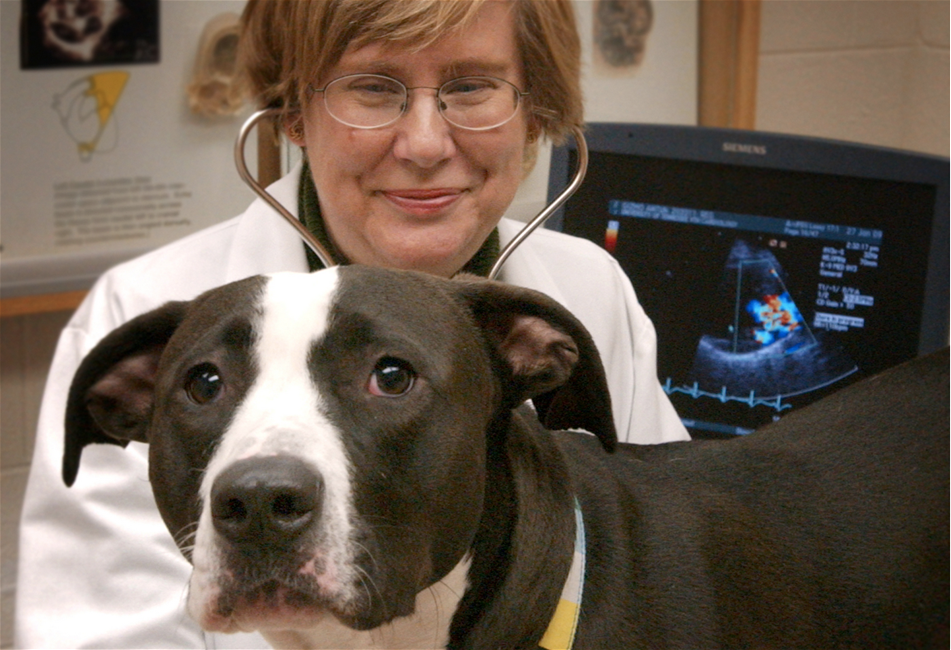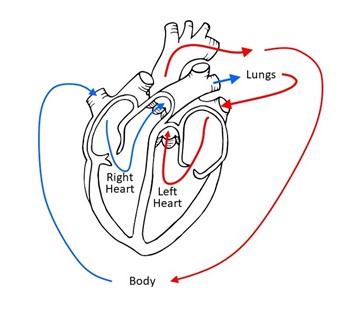

Search Help
Enter a country to search internationally or a city/state or zip to search within the US. If you select a country it will search only within that country. If you select only a state it will only search within that state. If you search for a zip code or city/state combo it will search within a proximityWhat is a Board-Certified Veterinary Cardiologist?
A Veterinary Cardiologist is a specialist that has advanced training in the heart and circulatory system.
To become a Board-certified Veterinary Cardiologist, a veterinarian usually completes a one year internship followed by extensive specialized training in an approved residency training program (usually 3-5 years). Most Veterinary Cardiologists work with small animals; however, some specialize in large animals, including horses and cattle.
What conditions do Veterinary Cardiologists treat?
Board-certified Veterinary Cardiologists focus on diagnosing and treating diseases of the heart and some lung conditions, which include:
- Congestive heart failure (CHF)
- Heart muscle disease (Dilated cardiomyopathy or hypertrophic cardiomyopathy)
- Age related changes to the valves of the heart (Degenerative mitral valve disease)
- Coughing and other breathing problems
- Congenital (present at birth) heart defects
- Cardiac arrhythmias (problems with the rate and/or rhythm of your animal’s heart)
- Diseases of the pericardium (sac surrounding the heart)
- Cardiac tumors
- High blood pressure (hypertension)
- Pulmonary hypertension (high blood pressure in the lungs)
Veterinary Cardiology Specialists will perform a complete and thorough physical examination on your animal, and based on these initial findings, additional tests will be discussed. They will also review your animal’s past history and current medications. Depending on your animal’s condition, diagnostic testing or treatments may include:
- Echocardiography (sonogram) – non-invasive ultrasound imaging of the heart
- Electrocardiography (ECG) – non-invasive electrical reading of the heart’s rhythm
- Blood pressure evaluation
- Holter monitor – 24 hour ECG performed at home
- Radiography (x-rays) of the chest and lungs
- Surgical repair of congenital heart defects
- Cardiac catheterization procedures
- Balloon valvuloplasty to dilate narrowed valves
- Pacemaker implantation for animals with too slow of a heart rate
- OFA Heart Registry Certification for breeding programs
How do Veterinary Cardiologists work with your primary care vet?
Board-certified Veterinary Cardiologists are an integral part of your animal’s health care team from the time a potential cardiac abnormality is noted. Early diagnosis and appropriate therapy of cardiac conditions helps your animal live a longer and healthier life. They work closely with your primary care veterinarian to ensure your animal’s optimal health. While some cardiac conditions require hospitalization, most conditions can be managed on an outpatient basis by a Board-certified veterinary cardiologist along with your primary care veterinarian.
Many Veterinary Cardiology Specialists practice in veterinary teaching hospitals or large referral clinics and are contributing to clinical research programs that aim to improve the cardiac health of animals. Veterinary Cardiology research is essential to identify new diagnostic tests and treatments for cardiac conditions in animals and even humans.
Veterinary education is also important to the Veterinary Cardiologist. From training veterinary students to providing continuing education courses to veterinarians and to training future board certified cardiologists, cardiology specialists are often involved in improving veterinary knowledge and understanding of the cardiac and circulatory conditions.
...
Find a Board-certified veterinary cardiologist using our search tool!
Edited by:
Rebecca Saunders, DVM, DACVIM (Cardiology)
April, 2020
Pulmonary Hypertension in Dogs
What is Pulmonary Hypertension (PH)?
Pulmonary hypertension is high blood pressure in the arteries of the lungs. There are many diseases that can lead to PH. Most commonly, PH is caused by either: 1) chronic (long-standing) lung disease, or 2) chronic heart disease affecting the left side of the heart.
1. Chronic lung disease decreases the amount of oxygen that is absorbed by the lungs. This causes a decrease in oxygen in the body, making the patient feel weak and tired. Patients may also breathe harder and faster at rest. Additionally, the low oxygen levels cause the pulmonary (lung) arteries to become thick and stiff. The stiff lung arteries force the right side of the heart to contract against an abnormally high pressure. Over time, this can cause the right heart to fail, causing fluid to leak out of the liver into the abdomen (belly). Fluid in the abdomen is called ascites.
2. Chronic left-sided heart disease causes blood to back up into the lungs. This causes the pulmonary arteries to become stiff as a secondary reaction. PH caused by left heart disease is typically not as severe as PH caused by chronic lung disease.

This diagram shows the normal flow of blood through the heart, lungs, and body. Red lines show blood that has become oxygenated by traveling through the lungs. Oxygenated blood is pumped to the body by the left side of the heart. As blood travels
through the body, it gives its supply of oxygen to the tissues, and then returns to the heart in the veins. Blue lines indicate deoxygenated venous blood. Venous blood travels to the right heart and then is pumped to the lungs where it becomes oxygenated.
What are the signs of PH?
- Labored breathing
- Increased respiratory rate greater than 35 breaths per minute (one rise and one fall of the chest = one breath) when your dog is asleep
- Coughing/wheezing
- Fainting/collapse
- Decreased energy
PLEASE NOTE: If your dog is experiencing coughing, labored breathing, and/or a persistent increase in its resting respiratory rate, they should be seen by your primary care veterinarian or an emergency veterinarian. These symptoms may indicate a life-threatening condition
How is PH diagnosed?
If your pet is showing signs suspicious for PH, ask your veterinarian if they think your pet should be referred to a Board-certified Veterinary Cardiologist. A Veterinary Cardiologist can recommend the most appropriate tests to determine if your pet has PH. Possible tests include:
- Chest x-rays to look for signs of heart disease and/or lung disease
- Echocardiogram (ultrasound of the heart) to determine if there is increased pressure in the right heart and pulmonary artery, or evidence of left-sided heart failure
- CAT scan of the heart and lungs
- Catheterization of the lungs to directly measure lung pressure
How is PH Treated?
Oxygen therapy is very helpful for dogs with PH who are in the hospital because they are having trouble breathing. The most important treatment for PH is to address the underlying problem. Sometimes successfully treating the primary disease will cause
the PH to improve so that no other treatment is needed. Unfortunately, often by the time PH is diagnosed, the underlying condition has persisted for so long that the lung changes are irreversible. In these cases, we can give medicine that will dilate
the pulmonary arteries to help lower the severity of PH. The most common of these drugs are sildenafil, tadalafil, and pimobendane. These medications must be prescribed by a veterinarian who will monitor and guide the treatment of your pet.
What is the prognosis for PH?
Successfully reducing the severity of PH will improve a dog’s quality of life. However, PH tends to be a progressive condition that often becomes resistant to treatment over time. This is why it is so important to establish a diagnosis early while your dog has the best chance for responding.
PLEASE NOTE: If your dog is experiencing coughing, labored breathing and/or a persistent increase in its resting respiratory rate, they should be seen by your primary care veterinarian or an emergency veterinarian as these symptoms may indicate a life-threatening conditio
